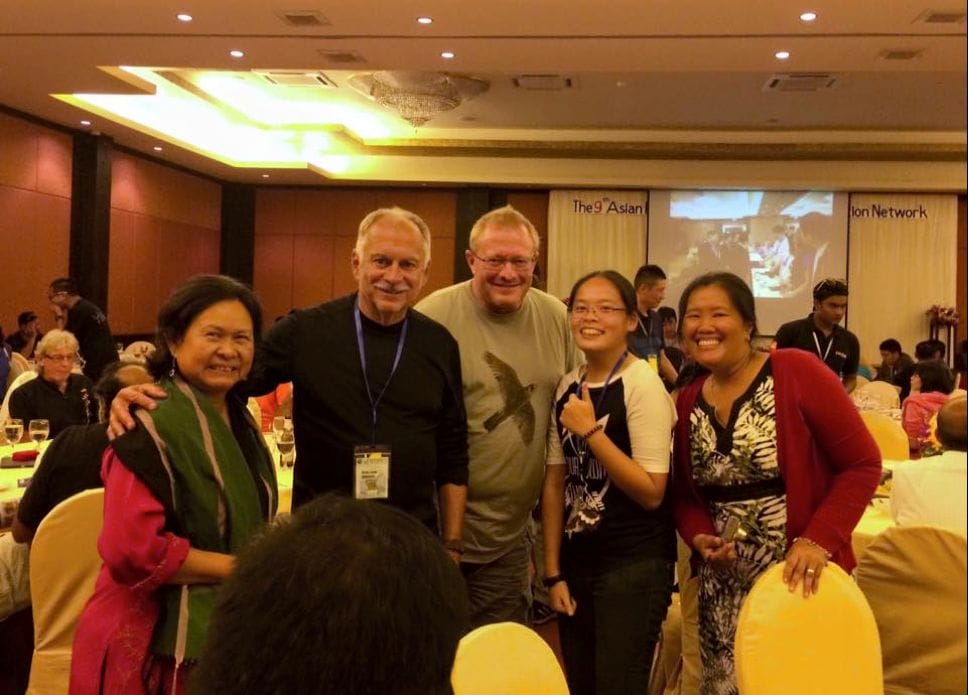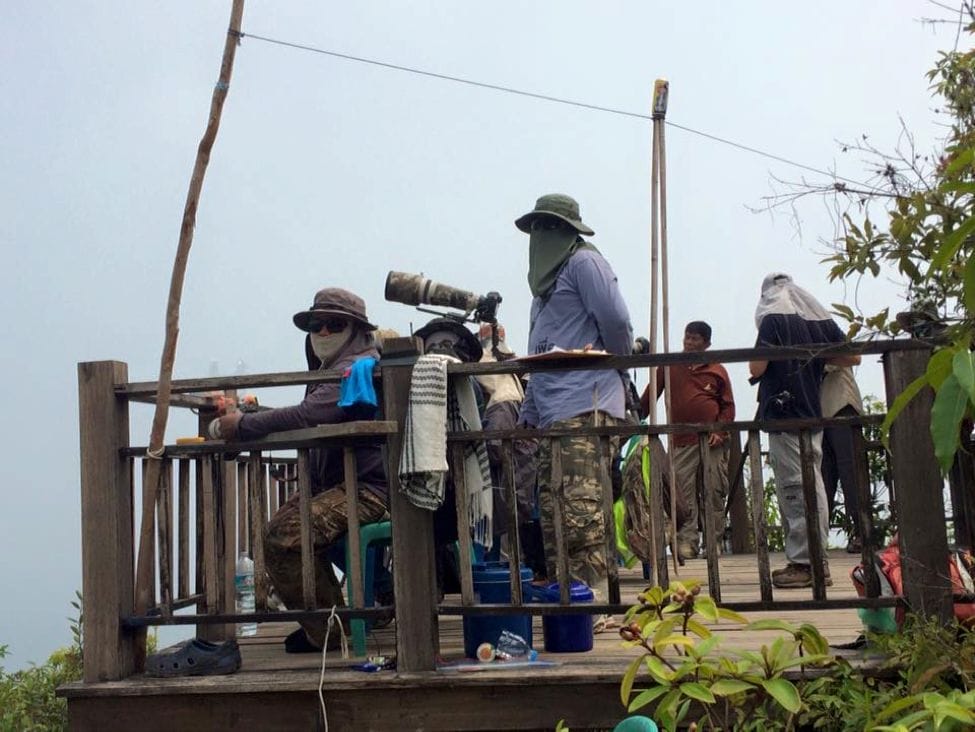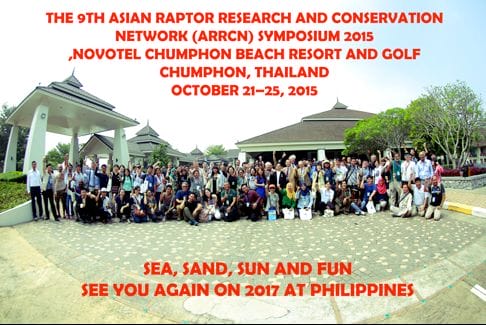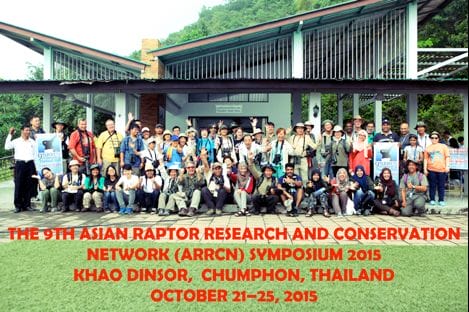by Jelaine Gan
WBCP Raptor Group’s young member Jelaine Gan spreads her wings to Thailand! She provides thoughtful insights about studying raptors, doing research about raptors in the Philippines, meeting fellow raptor enthusiasts, and going raptor watching in Thailand.
The 9th ARRCN Symposium in Chumphon, Thailand was an adventure of many firsts. It was my first trip to Thailand, first conference, first solo journey, and most importantly, my first research presentation. It was just amazing.

The presentations made at the conference opened up new possibilities. The researches are outstanding and their contributions are significant. When before the farmers would use rodenticide to prevent rats from eating their crops, they now have resident Barn Owls who feed on the rats. Raptor watchers also shared their knowledge and experiences from their respective countries. Each country along the flyway contributing a piece of information to the raptor migration puzzle. It is apparent, the use of advance technology such as satellite tracking, GPS-tags, and cameras have changed the way things are done to monitor birds. Our neighbours are capitalizing on this technology and have made strides in understanding the birds. However, it is also amazing how years of tracking have shown us that we still know nothing. One of the keynote speakers, Dr. Keith Bildstein, emphasized how the Turkey Vultures were changing their mind each season. Some individuals they tracked would go back to their previous wintering spot, but on other years, the birds would go to a different spot or not migrate long distances at all. Migration is governed by a complex set of behaviours that we couldn’t yet grasp.
Aside from the learning experience, what I loved the most was meeting people. A diverse group have gathered in Chumphon to share their love for raptors and to exchange ideas. There were students, professional tour guides, officers, and professors from different organizations, schools, culture, and religion. There were raptor biologists whose names I have read in journals before. Surrounded by legends, such as Dr. Ian Newton, who has been studying raptors for more than the years I have lived, I was pumped up and inspired to pursue this field.

The students from other countries were also great company. Hearing stories about their university and education makes me long for a better education system in the Philippines. Research is more popular and established in their countries, thus the opportunities presented to them were far wider. I hope, in the future, our government would give more support to research. I made friends during those days, and I know their knowledge will help me some day. Though a lot can be gleaned from the internet, what with the abundance of journals and articles, meeting the actual researchers themselves are more significant and helpful in the long run.
Another highlight was the field trip. I must confess, I was more excited about the field trip than the conference itself. It’s just that I have heard so many stories about the place and I couldn’t help but be giddy with excitement. Khao Dinsor, one of the most important raptor watchsite in the Orient, was even better than I have imagined.
First, the birds were awesome. I got to see around half dozen raptor species during the trip. Even better was that the raptors flew quite close, enough to see their features. The counters at the site were even able to tell the females from the males, and the juveniles from the adults of some species if they come close enough. We also came at a time nearing the peak, so there was heavy air traffic with all those raptors flying by. The most abundant of them all, the Black Baza, made a spectacular show to the delight of everyone. They came in huge flocks, some easily more than a thousand. They would appear at different directions, and it was simply jaw-dropping. They would fly in close enough that we can see the colors and the markings. Black Bazas are so beautiful.

Second, the watch was well-coordinated. I am amazed at the efficiency of the system in place. The Flyway Foundation monitors two stations in Khao Dinsor, and both have interns doing the counting everyday of the migration season. Each team would have photographer with them in order to take a picture of unidentified birds. The two teams would then be in constant communication with each other through the use of radio. They would radio in sightings that could possibly be seen by the other group in their station. This effort eliminates the error of double-counting.

Lastly, locals support the activity. The local government invested on the trails, infrastructures, and watchsites to make the watch accessible and easier. Interestingly, the place is quite famous. When we were there, we meet several Thai from different provinces who went there to watch the raptors. I eve met some Filipinos based in Thailand! During the off-season, the locals are fond of hiking there. It was enjoyed by both locals and foreigner.
The host country did a great job in organizing the conference. I had a great time learning and interacting with the other participants. And now, the torch has been passed onto us. The Philippines will be hosting the next symposium, the 10th ARRCN Raptor Symposium, in Davao come 2017. We hope you can come!


